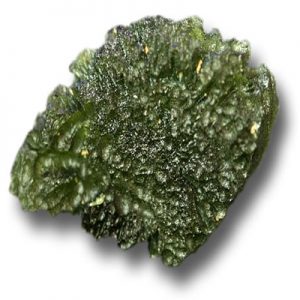Moldavite (Tektite)
Moldavite is a beautiful olive green Tektite with inclusions of bubbles and honey-like swirls. It was first discovered in the Czech Republic (then Moravia) near the River Moldau which it is named after.
Moldavite is similar to other Tektites such as Libyan Desert Glass and Indochinites. Tektites may be Meteoric Silica Glass as a result of the impact of a meteor on Earth. Tektites are usually found in association with meteor impact craters or suspected ancient craters. Their origin is not fully understood. The leading theory, the “Meteorite Impact Theory”, is that when a meteorite hits the Earth, the heat and pressure of the impact are so great that it causes rock and sand to be fused into glass or Tektites. Tektites, like all natural glasses, contains gas bubbles and “swirl” like inclusions.
| Category: | Glass |
| Formula: | SiO2(+Al2O3) |
| Crystallography | Amorphous (natural glass) |
| Crystal Habit: | n/a |
| Cleavage: | None |
| Fracture: | Conchoidal, Sub-conchoidal |
| Tenacity: | Brittle |
| Moh’s Hardness: | 5.5 – 6.5 |
| Density: | 2.27 – 3.40 (g/cm3) |
| Radioactivity: | Not Radioactive |
| Color: | Green, Olive Green |
| Transparency: | Transparent to Translucent |
| Luster: | Vitreous |
| Refractive Index: | 1.48 – 1.54 Isotropic |
| Birefringence: | 0.00 (Isotropic) |
| Dispersion: | n/a |
| Pleochroism: | n/a |


